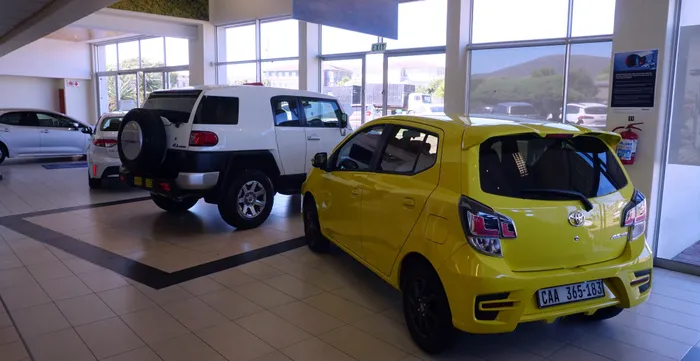A complete guide to changing car ownership in South Africa

Discover the essential steps for transferring car ownership in South Africa when buying or selling a vehicle privately. Learn about the responsibilities of both sellers and buyers, required documents, and the upcoming online process for hassle-free transactions. Picture Ian Landsberg, Independent Newspapers.
With rising vehicle prices and increasing economic pressures, more South Africans are choosing to sell and buy their cars privately rather than through dealerships to secure a better deal.
Beyond economics, many buyers are also becoming more comfortable with browsing online and shopping around, often opting for direct connections with sellers.
These trends make understanding the correct process for transferring car ownership increasingly important. Not only is it a legal requirement to notify the registering authority of any ownership changes within 21 days, but failing to do so can leave the seller on the hook for traffic violations or accidents involving the vehicle long after the sale.
While dealerships usually handle these admin tasks, it is relatively straightforward for private buyers and sellers to manage the process themselves. Ernest North, co-founder of digital insurance platform Naked, takes us through the essential steps to ensure a hassle-free car ownership transfer in South Africa.
The seller vs buyer roles
The seller's main responsibility is to ensure the vehicle is no longer legally in its name, a step that prevents any future liabilities, such as fines.
The buyer is responsible for completing the transfer. They must take the required documents to the licensing office, submit the Registration and Licensing of Motor Vehicle (RLV) form, and pay the transfer and licensing fees to register the vehicle in their name.
- First things first — gather your documents
- There are quite a few documents required to transfer car ownership.
The seller (current owner) needs to:
- Provide the buyer with their vehicle registration certificate. If the car is still under financing, the seller needs to provide the loan details from the finance house.
- Provide a valid roadworthy certificate, which is required to complete the transfer of ownership.
- Supply the buyer with a certified copy of their South African ID or passport (and a valid visa if the new owner is a foreign national), along with proof of address such as a municipal or utility bill.
- Submit the Notification of Change of Ownership (NCO) form (which needs to be signed by both the seller and the buyer) to their licensing department within 21 days of the transaction, to notify authorities that the vehicle is no longer in the seller’s possession.
The buyer needs to:
- Submit the Application for Registration and Licensing of Motor Vehicle (RLV) form to their relevant licensing department and pay any applicable fees to register the car in their name, within 21 days of the transaction.
- Also provide certified supporting documents, such as proof of address and identification.
- You can find the necessary forms on the NATIS website.
File the paperwork
Technically the seller and buyer have separate responsibilities to submit different documents during the transfer process. In practice, however, when the car is being registered in the same area (i.e., the same licensing department), it often makes sense for the buyer to submit all the documents to the local licensing department in one visit. The buyer will also need:
The current number plates (if the vehicle is currently registered). The new owner will need to fill in an application for new number plates if they want to personalise or use special number plates.
Cash or a card to pay all the fees to transfer ownership and any outstanding fines.
The licensing department will do the rest, including changing ownership, checking if the car is roadworthy, and issuing a new vehicle registration certificate in the new owner's name.
Don’t forget to update the insurance
Sellers need to remember to cancel insurance on the car that has been sold to avoid paying for cover no longer needed, while the new owner needs to update their own insurance policy to cover their new car.
Soon, you’ll be able to do it online
RMTC, in partnership with WeBuyCars, is building a system that will allow buyers and sellers to change ownership of a car online. This will make it much quicker and easier to buy and sell cars in private transactions.
PERSONAL FINANCE